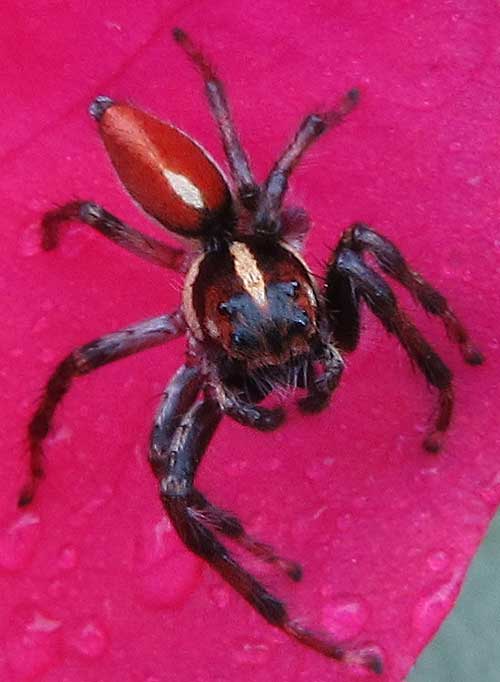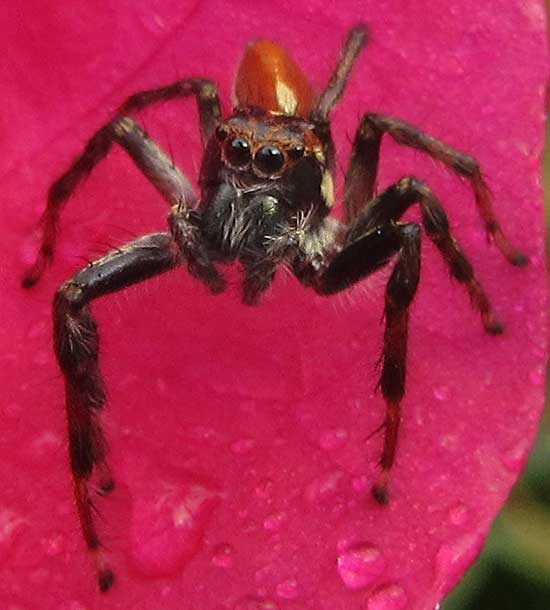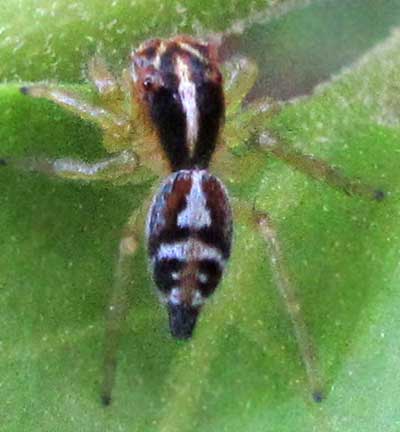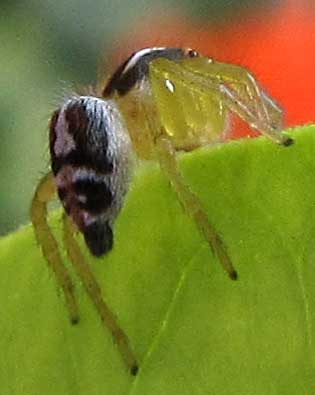Excerpts from Jim Conrad's
Naturalist Newsletter
from the February 21, 2016 Newsletter issued from Hacienda Chichen Resort beside Chichén Itzá Ruins; limestone bedrock; elevation ~39m (~128ft), N20.675°, W88.569°; central Yucatán state, MÉXICO
SUNSET SPIDER
Even though Bea's radar is set for butterflies, this week she couldn't avoid noticing a jumping spider whose gaudy colors -- literally -- rivaled those of the Bougainvilleas and butterflies Below, you can see one of those spiders:

A head-on image featuring the spider's sincere-looking front eyes with their bushy eyelashes is shown below:

This is male FRIGGA PRATENSIS, often known in English as the Sunset Spider. Sunset Spiders are well represented on the Internet because they are so eye-catching, common and pretty. The species also has caught the attention of at least one researcher because of this: Often among jumping spider species of this kind the males display vivid colors while females are inconspicuous -- the sexes are "dichromatic." But among Sunset Spiders both sexes are brightly colored. When Bea learned this she immediately went out looking for a female. She found several but they seemed quicker and more nervous than the males and getting good pictures was hard. Still, she came up with the one shown below:

You can see that the abdominal patterns are very different. Another shot showing the female crossing over to a leaf's undersurface is shown, just because it's a neat picture, is shown below:

At the 2007 Annual Meeting of the Society for Integrative & Comparative Biology, Lisa Taylor of Arizona State University reported on findings from field studies to figure out why both sexes of the Sunset Spider are brightly colored. She began her work with these three hypotheses:
#1: Brightly colored male Sunset Spiders are more attractive to females than drabber ones.
#2: Brightly colored males may be better fighters, which attracts females.
#3: Male Sunset Spider's bright colors may mimic potentially dangerous organisms, thus causing spider-eating predators to avoid them.
No evidence was found supporting the first two hypotheses, but, as Taylor writes, "When clay spider models were placed on leaves in the field, those that were painted with the color pattern of male F. pratensis were attacked less often by predators than unpainted control models, suggesting that such coloration has the potential to deter predators."